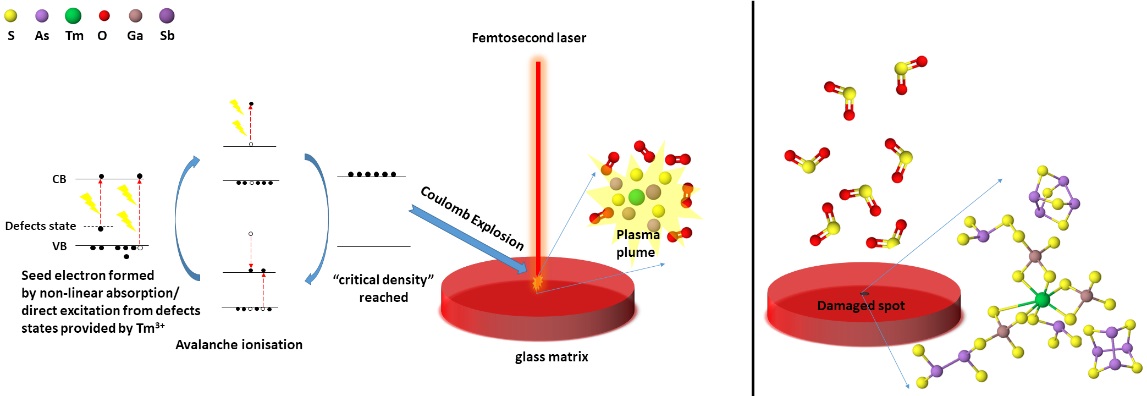Infrared waveguide devices play important roles in infrared lasers, which have wide applications in chemical sensing, medical diagnostics, thermal imaging, national defense, etc. As for the fabrication process of the waveguide devices, ultrafast lasers are preferred due to their high instantaneous power, cold machining, and 3D inscription abilities.
At present, most researches and fabrications were conducted in passive waveguide, which is made of optical materials without rare-earth element (RE) doping. But what happened when inscribing active infrared waveguide devices by ultrafast laser, in another word, what happened when focused femtosecond laser met RE element doped soft glasses?
LIU Lutao et al. from the Xi'an Institute of Optics and Precision Mechanics (XIOPM) of the Chinese Academy of Sciences (CAS) systematically investigated the mutual influence between RE element doping and femtosecond laser-induced effects in chalcogenide glass which is a kind of soft infrared glasses.
They found out that the femtosecond laser damage did not have negative effects on the luminescence properties of RE doped chalcogenide glass, proving the feasibility of femtosecond laser inscription in RE-doped glass to fabricate active infrared waveguide devices.
Besides, they also provided a femtosecond laser damage mechanism of RE-doped chalcogenide glass, which is worth referring to when inscribing waveguide using the femtosecond laser. The results were available online on Ceramics International.
They revealed that the RE addition in the glass matrix decreased its laser-induced damage threshold (LIDT), because of the RE ions' absorption to the laser and atomic structure changes caused by the RE doping. On the other hand, they found that the femtosecond laser-induced effects, such as changes in chemical composition and changes of atomic structure within the damaged region, became more severe than those of undoped glass. The reason was attributed to the participation of RE ions during the damage process, which tended to find a more "comfortable" place after plasma occurred, and the whole process is within a time magnitude of picosecond.
Since the laser damage effects in RE-doped glass were more severe, is luminescence properties affected? The good news they announced is that the luminescence properties of the doped glass, which is one of the most concerning properties in active optical properties, was not negative affected. The luminescence intensity of damaged glass became a little higher and the luminescence lifetime almost remained the same as the as prepared glass.
"This paved the way towards active infrared waveguide device fabrication using the ultrafast laser. We can be more confident to fabricate active infrared waveguide devices by femtosecond laser inscription without worrying that the ultrafast laser may damage the luminescence properties," said LIU Lutao.

Femtosecond laser-induced damage process in the Tm3+ -doped Ga0.8As29.2Sb10S60 glass.
Download: